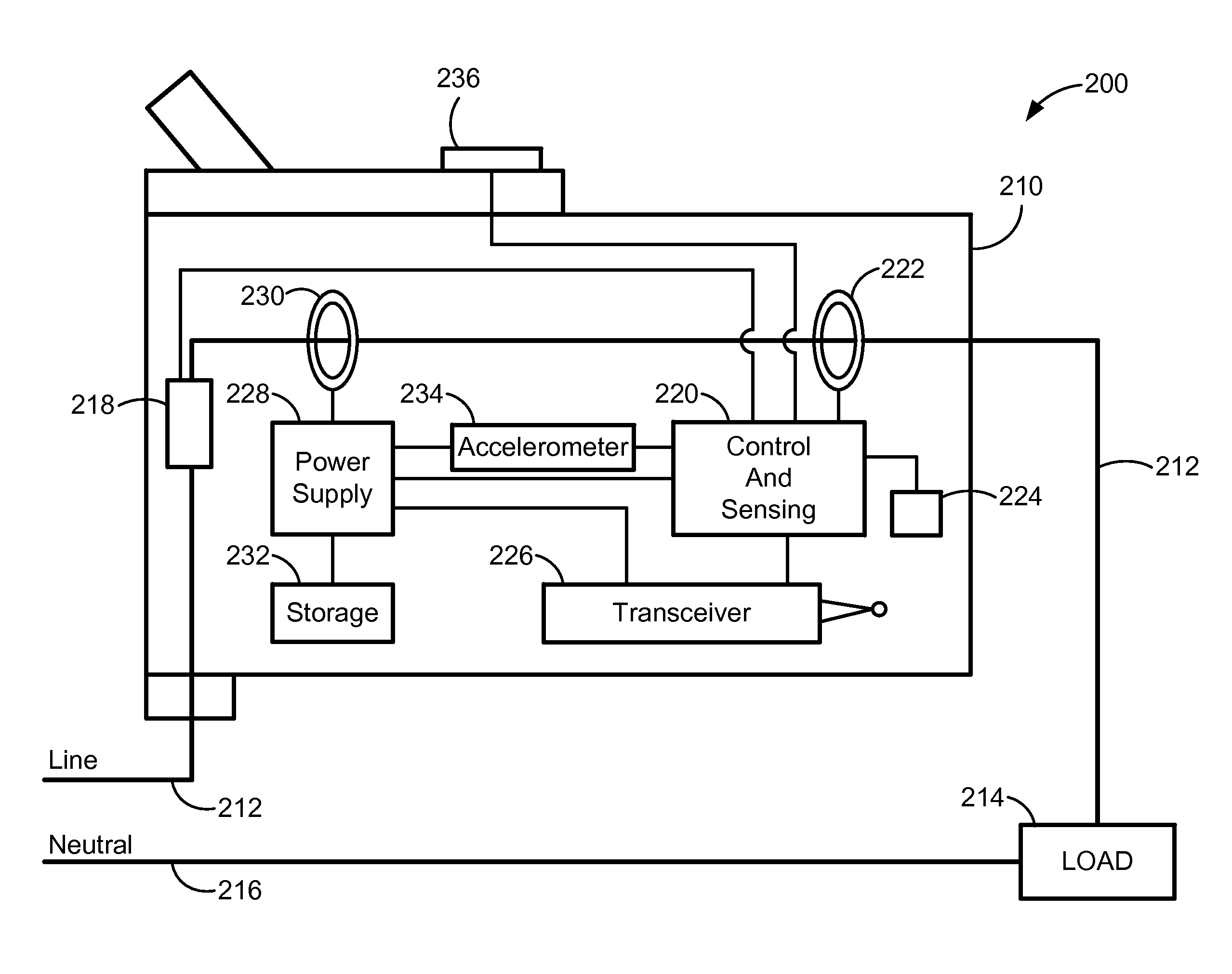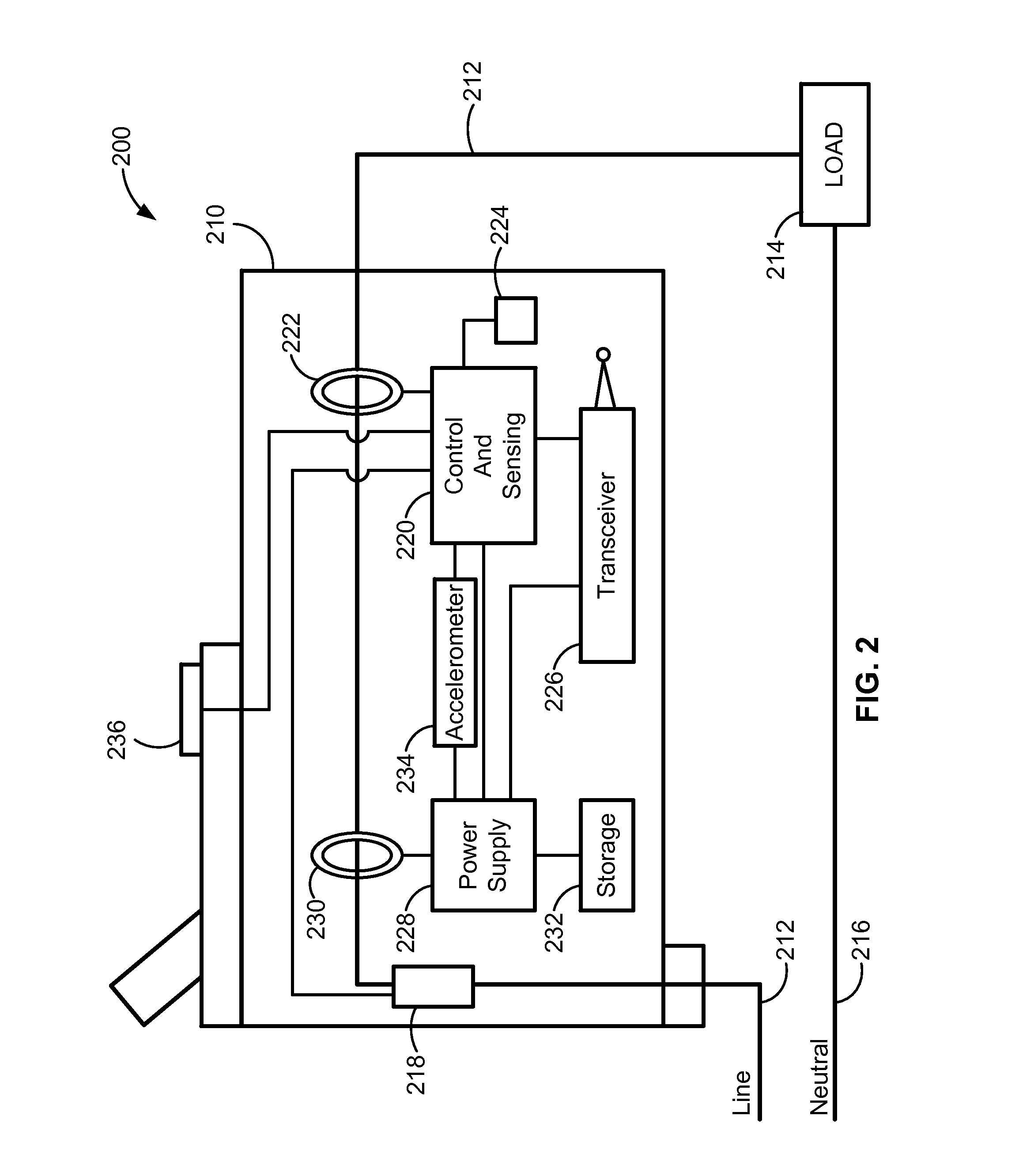Wireless branch circuit energy monitoring system
a branch circuit and energy monitoring technology, applied in the field of circuit breakers, can solve the problems of only being able to determine the circuit breaker, so as to reduce the amount of additional materials and labor
- Summary
- Abstract
- Description
- Claims
- Application Information
AI Technical Summary
Benefits of technology
Problems solved by technology
Method used
Image
Examples
Embodiment Construction
[0017]FIG. 1 shows a block diagram of a circuit breaker monitoring system 100. The circuit breaker monitoring system 100 includes a circuit breaker panel 110 with a plurality of circuit breakers 112. Each circuit breaker 112 includes a radio transmitter / receiver (“transceiver”) 114 for transmitting and receiving wireless data. The panel 110 may be an existing panel in which one or more existing circuit breakers has been replaced with the wireless circuit breakers 112.
[0018]The circuit breaker monitoring system 100 also includes a main energy monitoring module (“main module”) 116 remote from the circuit breaker panel 110. The main module 116 includes a radio transceiver 118 for receiving data transmitted by the radio transceivers 114 of the circuit breakers 112. It also includes a CPU (e.g., a microprocessor, controller, etc.) 130 coupled to the transceiver 118 for processing information received from the circuit breakers 112. The main module 116 may integrated with the panel 110 or ...
PUM
 Login to View More
Login to View More Abstract
Description
Claims
Application Information
 Login to View More
Login to View More - R&D
- Intellectual Property
- Life Sciences
- Materials
- Tech Scout
- Unparalleled Data Quality
- Higher Quality Content
- 60% Fewer Hallucinations
Browse by: Latest US Patents, China's latest patents, Technical Efficacy Thesaurus, Application Domain, Technology Topic, Popular Technical Reports.
© 2025 PatSnap. All rights reserved.Legal|Privacy policy|Modern Slavery Act Transparency Statement|Sitemap|About US| Contact US: help@patsnap.com



